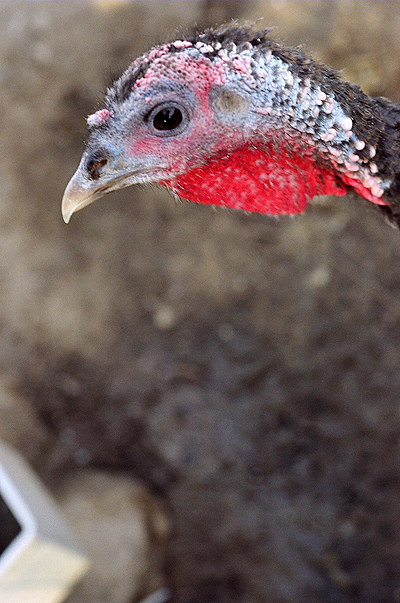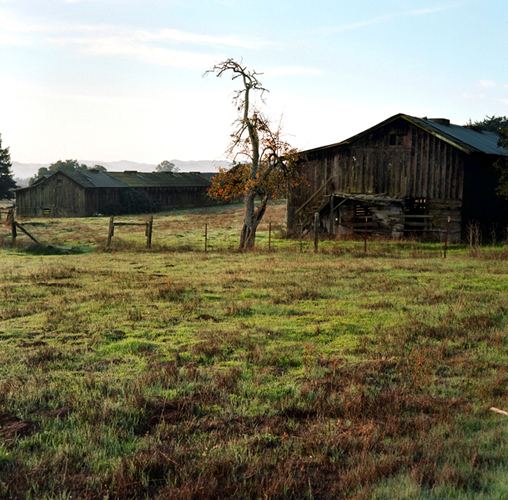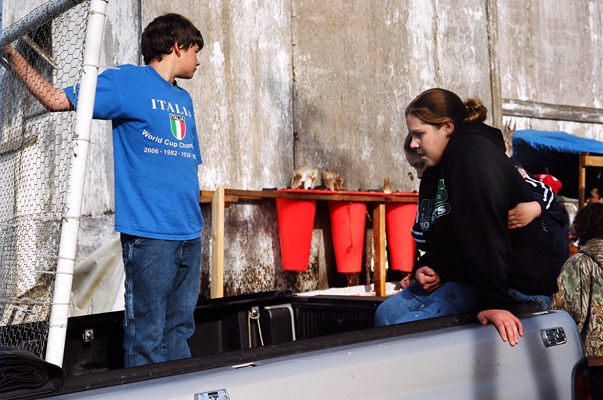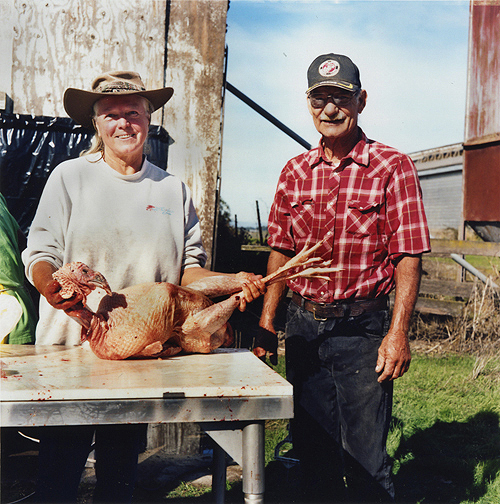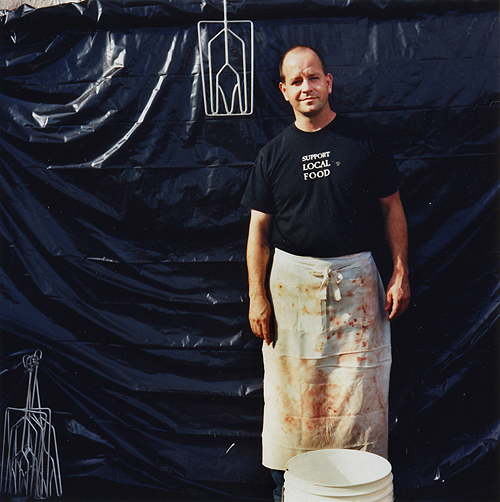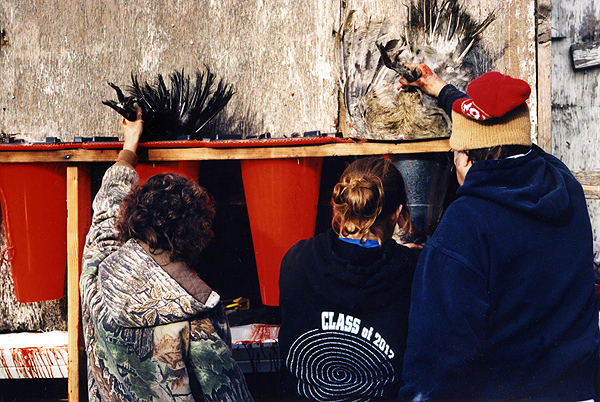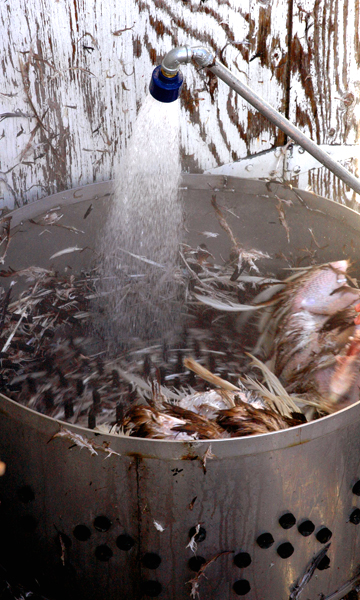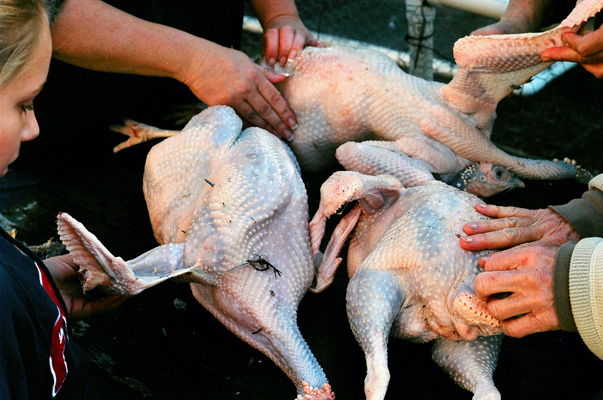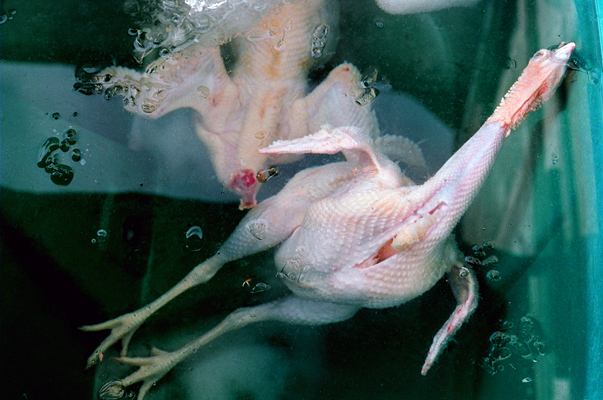Turkeys: Farm to Thanksgiving Table
| 1 OF 12 |
| In 2004, Slow Food USA launched a campaign called Renewing America's Food Traditions (or "RAFT"), whose purpose was to save endangered food species by getting farmers to grow them--and consumers to eat them. Members in Sonoma County, California, set out to revive heritage breed turkeys, but immediately faced a new issue: there were no farmers to raise them. |
Lisa M. Hamilton documents an attempt to bring back traditional poultry farming in
| 2 OF 12 |
In the early 20th century the region had 6,000 small poultry farms, but beginning in the 1950s, factors ranging from urbanization to industry consolidation to the advent of breakfast cereal wiped out nearly the entire industry. Today only a few small-scale poultry farmers remain, and none was keen on entering the business of raising unfamiliar breeds of turkeys.
Lisa M. Hamilton documents an attempt to bring back traditional poultry farming in
| 3 OF 12 |
| Four years ago, the Slow Food group joined up with a local 4H group to start a sort of "turkey CSA": Each year the 4H kids raise turkeys, just as they would a cow or a pig, and in the process learn responsibility, leadership, and practical farm economics. In return, Slow Food enlists community members to buy the birds. Because the kids raise the turkeys organically, they receive a generous price per pound. For now the venture is just a summer job, but people hope that it may eventually lead to a revitalization of the small-scale poultry industry. "It might not happen this year or next," one organizer said, "but someday we hope we'll find a kid who wants to take this on and run with it." |
Lisa M. Hamilton documents an attempt to bring back traditional poultry farming in
| 4 OF 12 |
| With this near-perfect solution in hand, the Slow Food members faced one final challenge: there was no small-scale processing plant that could "harvest" the birds. Again, they looked to the community. In what has become an annual tradition, the weekend before Thanksgiving everybody--kids, parents, Slow Food members, local chefs, and other volunteers--comes together to turn the turkeys from feathered friends to holiday entrees. They call the event "The Transformation." |
Lisa M. Hamilton documents an attempt to bring back traditional poultry farming in
| 5 OF 12 |
"I had no idea we'd be doing all this," said 4H-er Matt James. "I imagined a conveyer belt that would automatically cut their heads off and the bird would just come out clean. But it's more fun this way, 'cause we get to carry the birds around and see the different steps. It's better, all except the part where you have to cut the neck. That part is hard."
Lisa M. Hamilton documents an attempt to bring back traditional poultry farming in
| 6 OF 12 |
"I'm hoping that raising the kids this way will keep them doing what our family has been doing for six generations now," said Barbara Prebelich, grandmother of two 4H participants. Her husband, Tony, concurred, "I call what we're doing here B.S. That is, 'Before Safeway.'"
Lisa M. Hamilton documents an attempt to bring back traditional poultry farming in
| 7 OF 12 |
Even with a sectioned pig tattooed on his forearm, chef and head-to-tail eating proponent John Stewart guesses that he eats less meat than most people. "It's because I work with the whole animal. I see how much work goes into turning an animal into food. I'm also aware of how much there is to the animal--it's not all just prime rib."
Lisa M. Hamilton documents an attempt to bring back traditional poultry farming in
| 8 OF 12 |
Suzanne Amaral first showed a pig at a 4H event when she was two and a half years old and barely as tall as the animal itself. Now a pre-teen, she raises pigs and a steer each year. She says she gets attached, working with them every day. "I still cry when I sell them at auction," she said. "Even the mean ones." Turkeys don't cause such a problem. Here, her parents help her through the process from step one.
Lisa M. Hamilton documents an attempt to bring back traditional poultry farming in
| 9 OF 12 |
| The birds rotate through a hot water bath to loosen their feathers, and then are spun by this plucking machine. The inside of the barrel is lined with rubber "fingers" that clean the bird's exterior. |
Lisa M. Hamilton documents an attempt to bring back traditional poultry farming in
| 10 OF 12 |
Cheyenne McCambridge of Sonoma Valley 4H joins her mother, grandmother, and another 4H-er's mother to pluck what feathers were missed by the machine.
Lisa M. Hamilton documents an attempt to bring back traditional poultry farming in
| 11 OF 12 |
After being cleaned inside and out, each bird is cooled down in an ice bath. This year, the 4H kids will raise--and the community will buy from them--nearly two hundred turkeys. You can learn more about the project here .
Lisa M. Hamilton documents an attempt to bring back traditional poultry farming in
| 12 OF 12 |
"Sometimes when I explain what we do people look at me like I'm a monster," said Catherine Thode, one of the project's organizers and mother of the two youths who raised this turkey. "I see it differently. We've raised these birds from day one, we know everything they've ever eaten, and we know that right up to their last breath they were never once mistreated. If you're going to eat meat, well, I think this is the way it should be done."
Lisa M. Hamilton documents an attempt to bring back traditional poultry farming in
